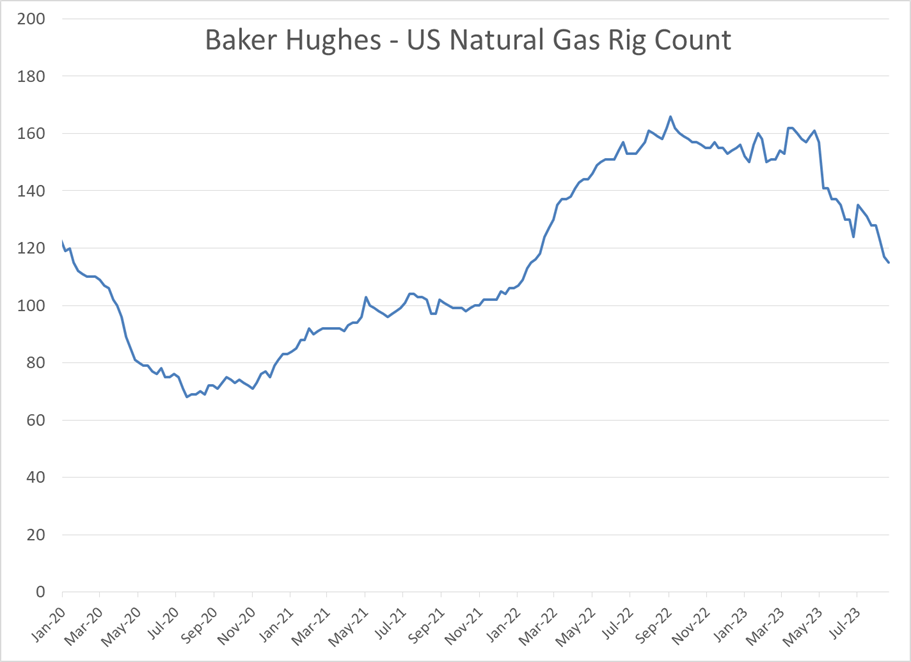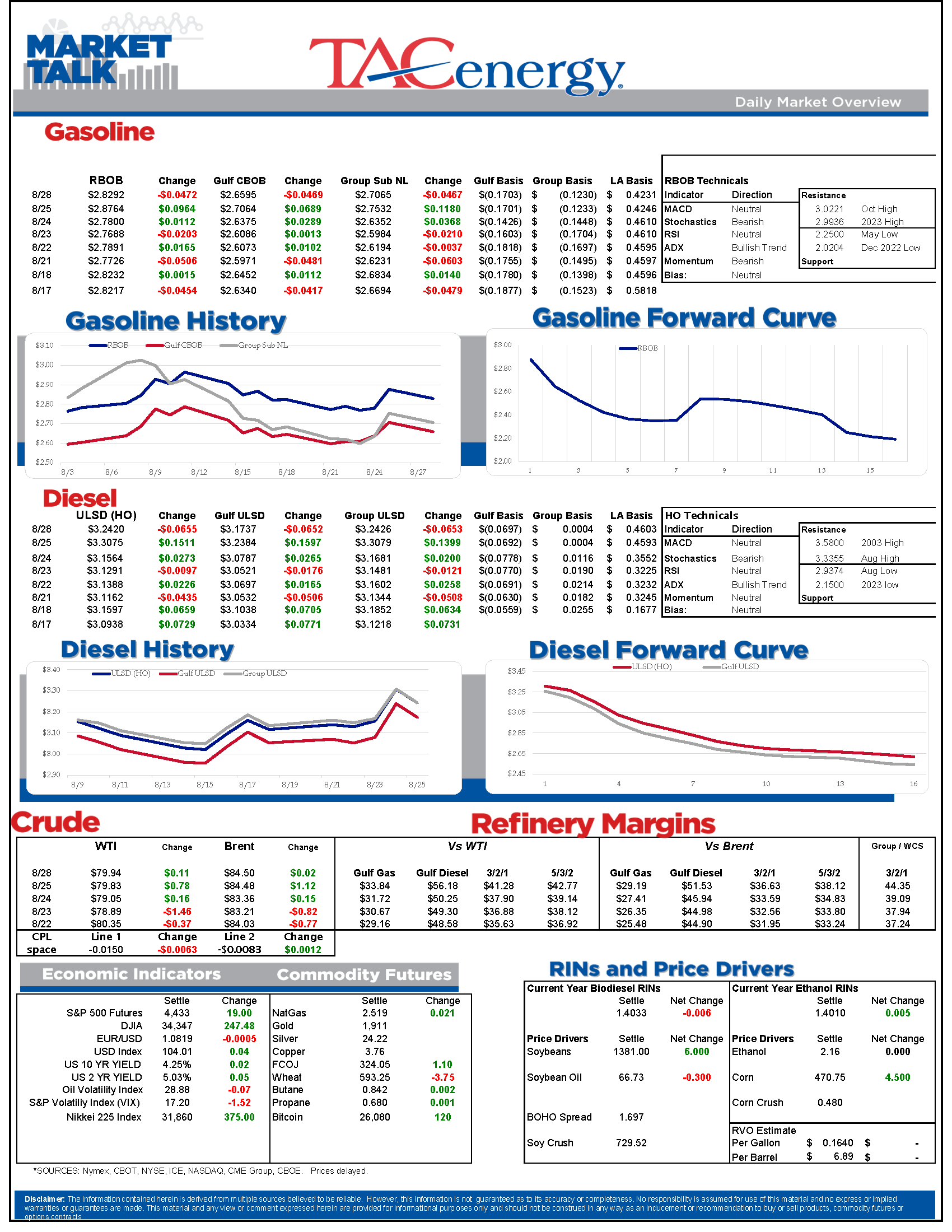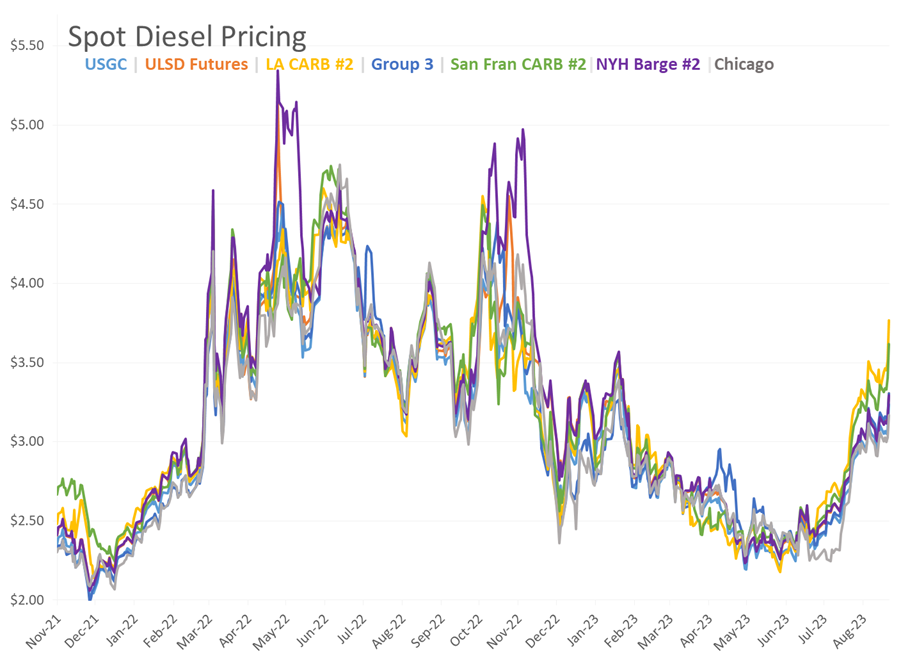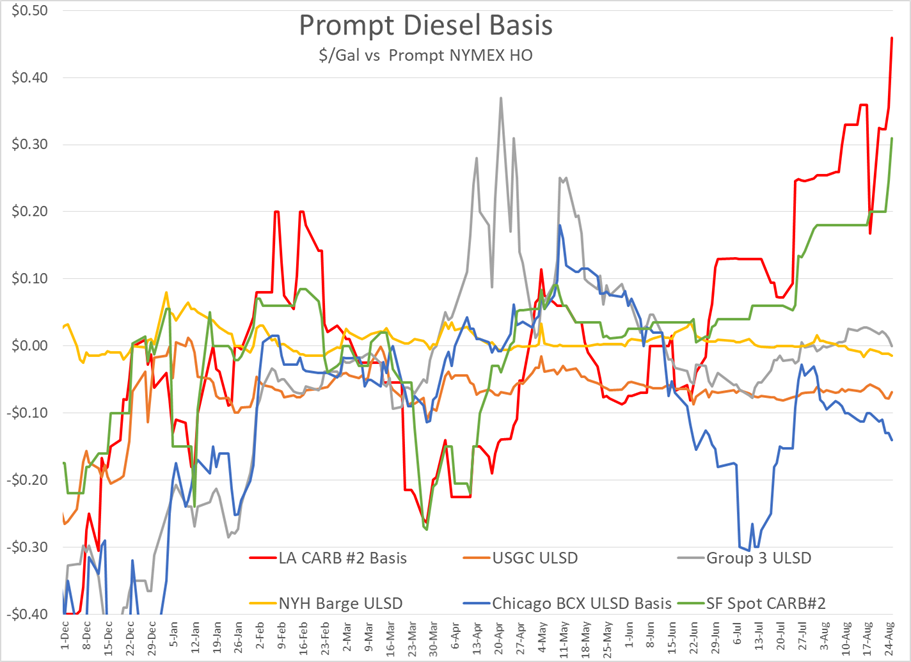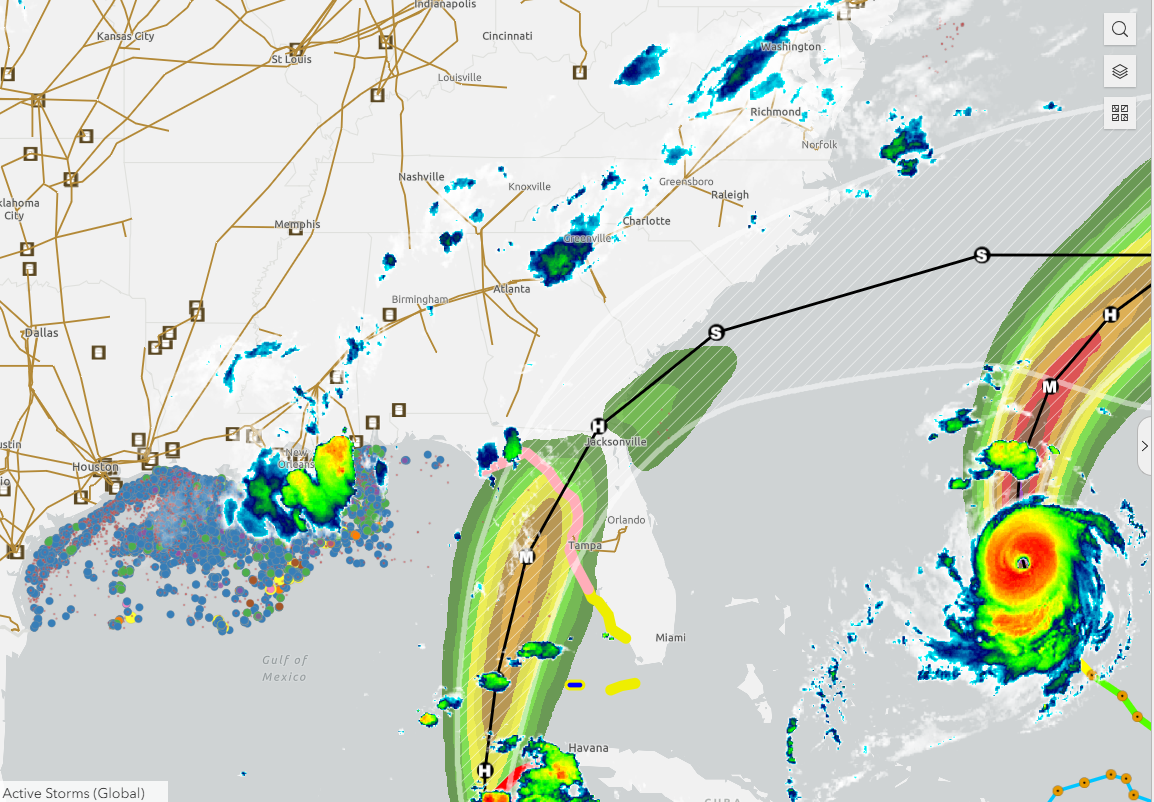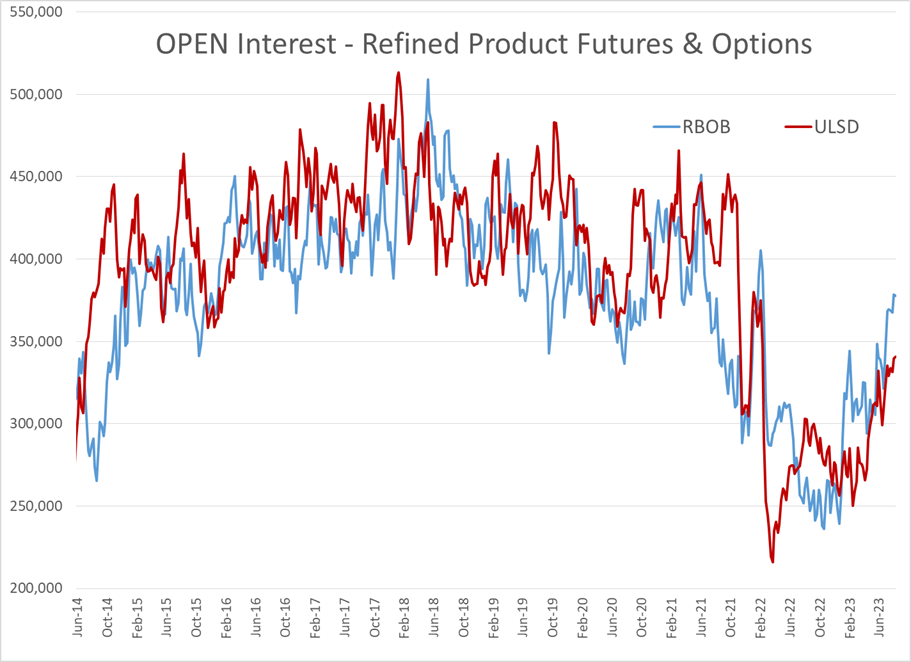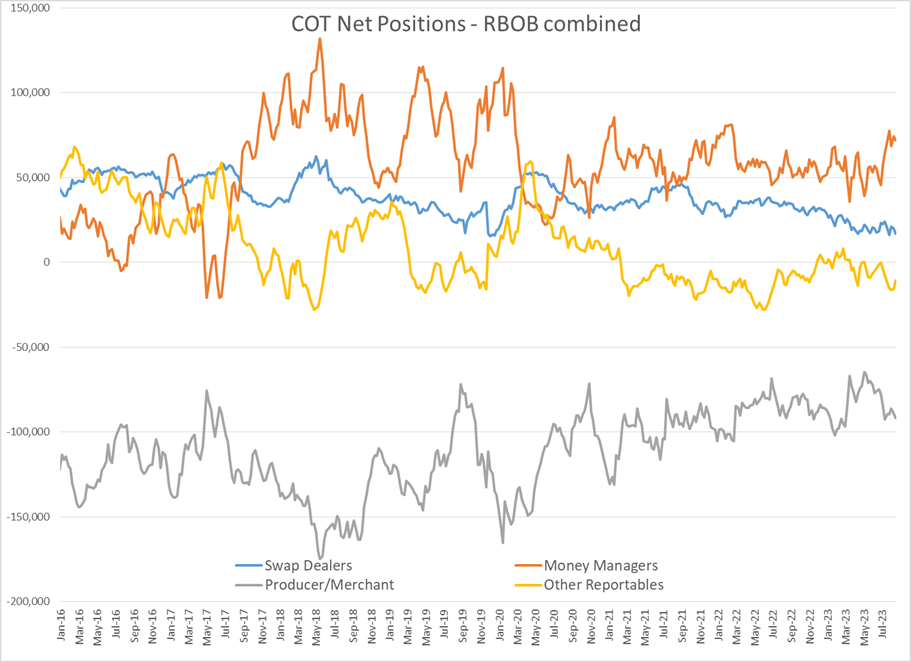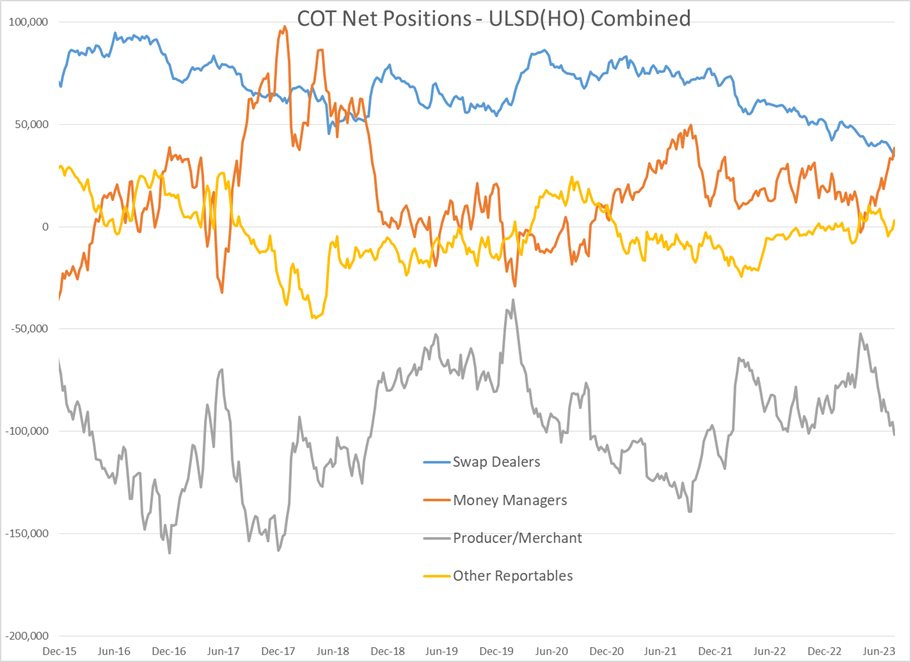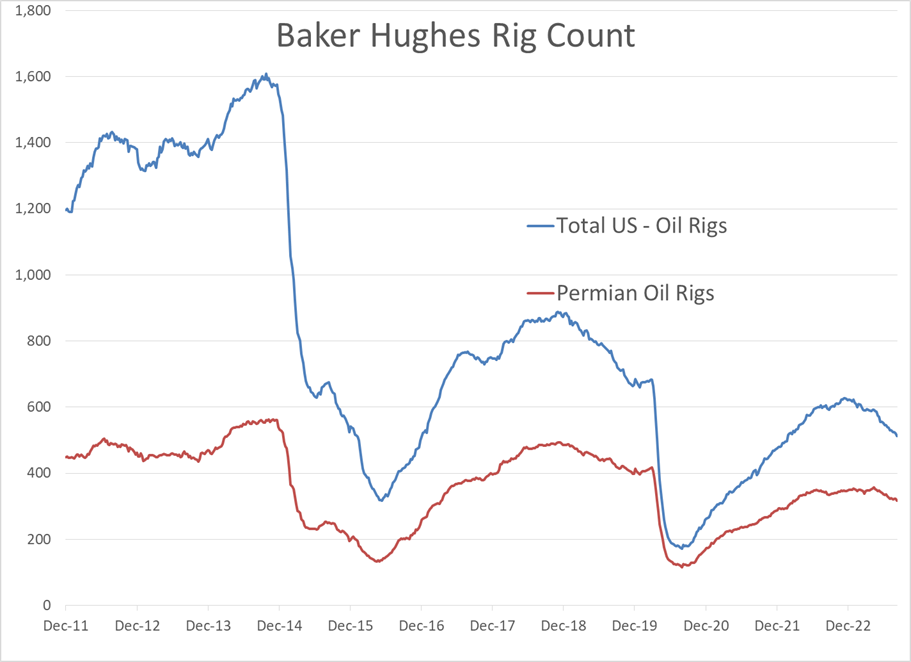Concerns Over Refinery Issues Seemed To Be The Major Theme That Sparked The Rush Of Panic Buying Friday

Energy prices are coming back to reality this morning after a runaway Friday rally got a bit out of control. ULSD futures led the way in both directions, adding 15 cents Friday to hit a new 7 month high at $3.3355, before pulling back by 7 cents this morning as cooler heads seem to be prevailing. Despite that pullback, the strong finish last week keeps the door open for a rally towards the 2023 high of $3.58 as long as prices can sustain their move north of $3.20 this week.
Concerns over refinery issues seemed to be the major theme that sparked the rush of panic buying Friday, although the forecast of a Hurricane reaching the Gulf of Mexico probably didn’t hurt even though it’s not a threat to most energy infrastructure.
The big story was a tank fire at Marathon’s 596mb/day plant in Garyville LA, which is the 3rd largest refinery in the country. Even though the fire was in a storage tank, and not an operating unit, the reports that operations were temporarily suspended as a precaution created a flurry of buying activity just before the settlement Friday. Terminal operations at the plant resumed Friday evening which suggests the fire will not have a lasting impact on operations, which goes a long way to explain the pullback in prices this morning.
Meanwhile, two of the TCEQ frequent flyers both reported upsets Friday. The Valero Mckee refinery reported flaring after a power loss Friday afternoon, which occurred as the facility was attempting to finalize repairs after an upset earlier this month. Marathon’s Galveston Bay facility continues to struggle to go even 1 week without some sort of mishap, this time reporting a fuel oil leak inside a containment dike. Exxon reported an upset at an FCC unit in its Beaumont TX facility overnight that caused brief flaring, but no reported unit shutdowns.
While the headlines were focused on Gulf Coast activities, the biggest price moves Friday were on the West Coast. Both LA and SF diesel basis saw big increases that pushed differentials and outright prices to their highest levels of the year even though the other US spot markets shrugged off the refinery news.
Tropical Storm Idalia formed off the Yucatan peninsula over the weekend and is expected to become a major hurricane before making landfall near Florida’s big bend early Wednesday morning. The storm is far enough east as it moves quickly through the Gulf of Mexico that it’s not a major threat to oil production and refining assets, although we can expect precautionary shutdowns of some offshore wells the next 2 days.
Unlike last year’s Hurricane Ian, which spared the Tampa Bay area with a late shift in its path, this storm looks like it will keep Tampa on the eastern side meaning it will be pushing water inland which could be trouble for the terminals around the bay which are right on the water’s edge. Unfortunately, another type of storm at a local terminal has complicated efforts to fill up customer tanks ahead of this system.
Hurricane Franklin has reached Major hurricane status this morning but is staying roughly 500 miles off of the East Coast as it makes its way north and does not appear to be a direct threat to land, although its high winds and waves could cause some challenges for vessels in the area. There’s another storm system given 50% odds of developing this week by the NHC off the West Coast of Africa, but it looks like it will be far enough north that it should stay out to sea.
Money managers reduced their speculative length (bets on higher prices) on most energy contracts last week with WTI, Brent, RBOB and Gasoil contracts all seeing declines. ULSD prices were the exception with new length added and old shorts reduced, pushing net length up by 17% on the week to a 22-month high. Open interest in refined products continues to increase with ULSD positions now at their highest level in 18-months.
Baker Hughes reported another large decline in the US drilling rig count with a net decrease of 8 oil rigs and 2 natural gas rigs last week. That decline brings the total count to a fresh 18 month low.
Click here to download a PDF of today's TACenergy Market Talk.
News & Views
View All
Week 19 - US DOE Inventory Recap

Another Wave Of Selling Pushed Energy Futures To Fresh Multi-Month Lows On Tuesday
The search for a bottom continues after another wave of selling pushed energy futures to fresh multi-month lows on Tuesday. While most of the futures complex remains on the edge of a technical breakdown, we still haven’t seen the snowball effect of selling that signals the bulls (or more likely their trading algorithms) have finally thrown in the towel.
The most important technical test of the day comes from the RBOB futures contract that managed a modest bounce off of its 200-day moving average Tuesday, and could make a case for a recovery rally if it’s able to sustain a move higher from here. If that layer of support breaks however, there’s not much on the charts to prevent another 20 cents of losses.
We’re seeing a bit of the opposite reaction this morning to the May CPI report that came in just below expectations than we did yesterday when the PPI report showed inflation was still running hot. Both refined products added a penny in the first few minutes following the report, tagging along with a bounce in US equity futures. The annual inflation rate from the CPI came in at 3.4%, which is still well above the FED’s target of 2%, but the monthly rate of .3% was slightly lower than many estimates around .4%. Both the PPI and CPI reports showed the spring rally in fuel prices leading the tick up in inflation, which give us good reason to believe we’ll see lower numbers in June now that both gasoline and diesel futures have dropped 40 cents from their April highs.
ULSD futures hit their lowest level since July 5th of last year, which was just before the contract rallied more than $1/gallon in the next two months. Physical traders are also acting bearish on diesel contracts with more heavy selling in the LA and Group 3 markets which dropped to 14 cent discounts to futures Tuesday, but were left in the dust by Chicago values that collapsed to a 30 cent discount.
The latest crash in Chicago diesel basis combined with futures trading near a 10 month low pushed cash prices to the lowest level we’ve seen since December 2021, offering a seasonally unusual opportunity for those that are still waiting to lock in their fuel price for the next year.
The diesel overhang is also witnessed in the ongoing collapse in California LCFS credit values which reached an 8 year low Tuesday at $45/MT yesterday, down from $140/MT just over 2 years ago. The drop in LCFS values combined with last year’s collapse in RINs and the upcoming change to the blender’s tax credit has already caused the closure of a few biodiesel plants, a re-conversion of a refinery back to traditional fuels, and then Tuesday the world’s largest RD producer issued a profit warning due to a continued decrease in both diesel prices, and the subsidies for renewables. For those that lived through the early days of the ethanol industry that included multiple cycles of bankruptcies and frequent regulation changes wreaking havoc, this cycle on the diesel side of the barrel feels oddly similar.
The IEA continues to bang a bearish drum to try and counteract OPEC’s bullishness in their monthly reports, citing weak demand in Europe as a driver of OECD nations moving into fuel consumption contraction in the first quarter of 2024. The tax-payer funded agency also acknowledged the drop in refinery margins in April as the distillate glut continues across much of the world, while also noting that refinery run rates are set to increase further in the back half of the year. The report also noted that even if OPEC & Friends (now Rebranded as DoC) maintain their output cuts through 2025, growth in output from the US, Guyana, Canada and Brazil will be enough to keep world supply outpacing demand.
RIN prices got a quick bounce this week after a Federal Court denied a refinery suit against the EPA’s RFS rules for 2020-2022, but already gave back those gains yesterday, with D4 and D6 values holding around the $.45/RIN mark, down slightly from this time last year when they were worth about $1.50.
Click here to download a PDF of today's TACenergy Market Talk.

Energy Prices Are Trading At Multi-Month Lows
Energy prices are trading at multi-month lows and are on the verge of a technical breakdown this morning after Monday’s attempted rally fizzled, and concerns over high inflation and low demand both seem to be keeping buyers at bay.
The complex was trading modestly lower overnight, and then the slide picked up steam following the April Producer Price Index (PPI) report which showed stubbornly high inflation of .5% for the month (which would annualize to 6%) giving the FED another reason to hold off on cutting interest rates. The bright side to this report is that the main contributor to April’s higher inflation reading was higher energy prices, and with the sharp pullback we’ve seen over the past month that component of pricing pressure should come down in the May report.
OPEC continues to bang a bullish drum in its monthly oil market report, increasing its economic estimates for Q1 of this year, and holding its forecasted demand growth steady at 2.8% and 2.9% for 2024 and 2025 respectively. The report also noted big decreases in clean-product tanker rates with east of Suez prices down 10% and West of Suez rates down 20%, in a sign that the physical market is not stressed over the potential shipping disruptions around the Middle East. Refinery margins declined across all major global markets as an end to a busy spring maintenance season and new capacity increased output.
What’s up Doc? The cartel also made a tweak to its monthly report and will now be highlighting output and demand for the countries participating in the Declaration of Cooperation (DoC…aka OPEC & Friends) to demonstrate solidarity and unity, which may signal that some in OPEC are getting nervous that the members may become more uncooperative in the coming months. Total OPEC output dipped by 48mb/day during April with declines in Nigeria and Iraq offsetting increases in Iran and the Congo. Total DoC output declined by 246mb/day during the month with Russia’s output declining by 154mb/day and Kazakhstan’s output down by 50mb/day.
Space on Colonial’s main diesel line (Line 2) settled in positive territory for the first time this year, as the building contango for distillates helps to incentivize shippers. There also appears to be another buildup of un-wanted inventory of distillates in several regional markets with basis values in LA, Chicago and the Group 3 market all reaching multi-month lows this week.
Some of the weakness in diesel prices can be blamed on recent wet weather delaying planting in several states, and those delays are also helping corn and ethanol prices rebound to approach their highest levels of the year.
New tariffs on Chinese EV’s are making headlines this week, but it’s a potential tariff on Used Cooking Oil (UCO) from China that could have a larger impact near term on the fuel industry as US grain processor think it’s unfair that China dares recycle oil to the detriment of their food to fuel factories.
Speaking of EV’s, the EIA this morning wrote that the US share of electric and hybrid vehicle sales decreased on the first quarter of 2024 after more than 3 years of steady growth.
Click here to download a PDF of today's TACenergy Market Talk.
